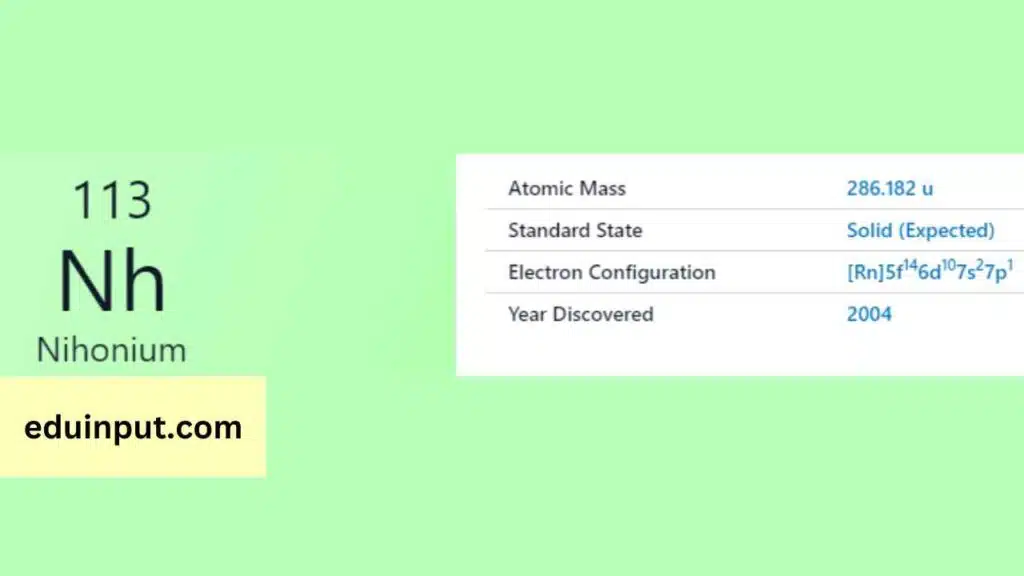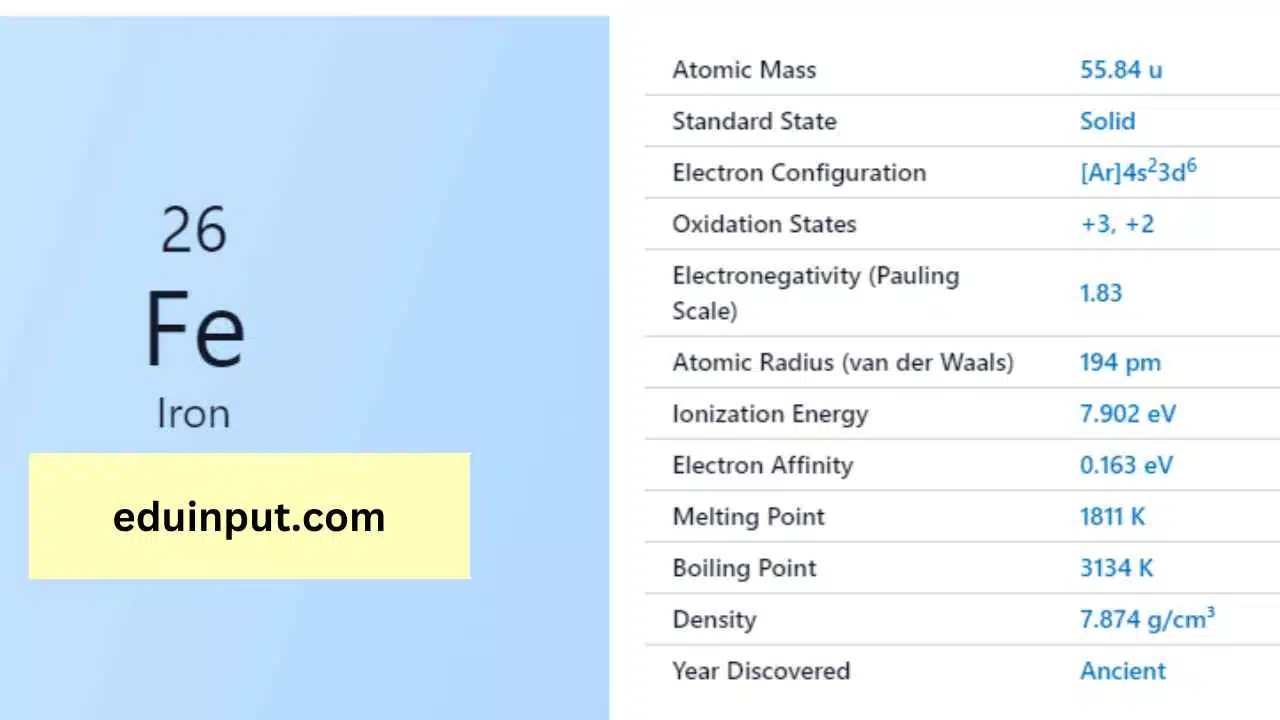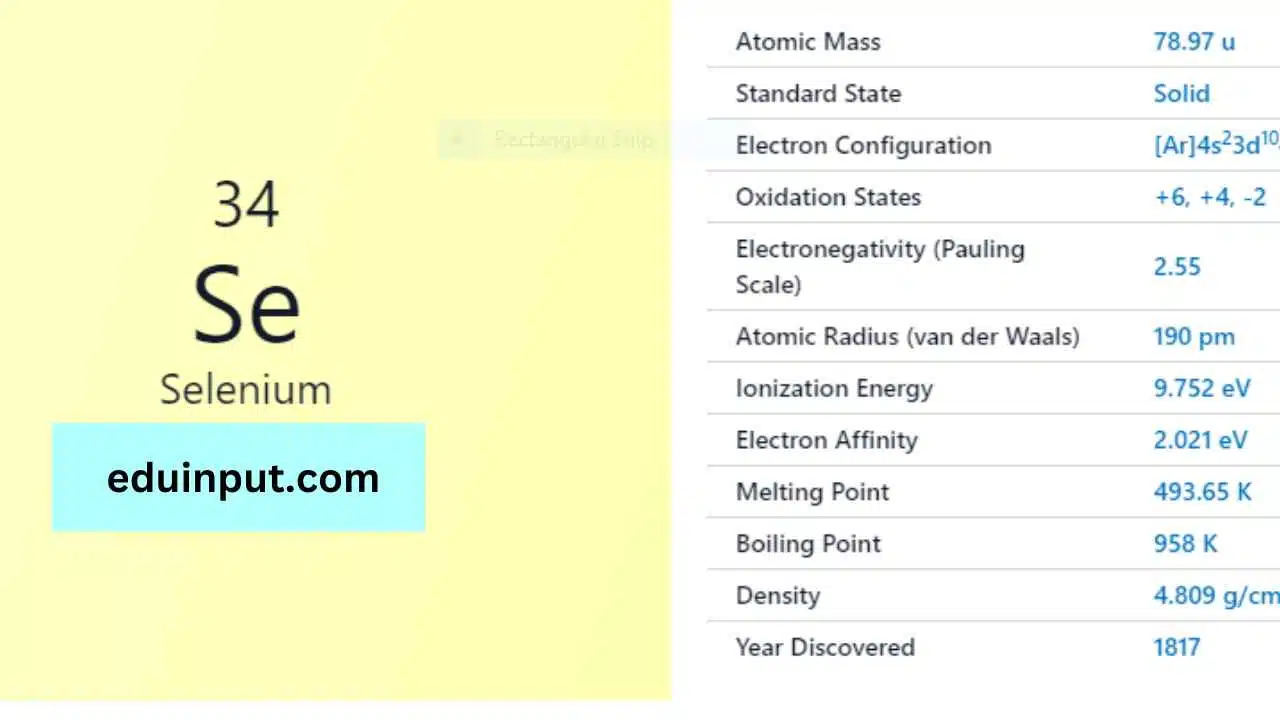Nihonium-Discovery, Properties, And Applications
Nihonium is a synthetic chemical element and the first element discovered in Japan. It is also known as element 113 and has the symbol Nh. Nihonium belongs to the p-block elements and is a member of the group 13 elements.

| Property | Value |
| Name | Nihonium |
| Symbol | Nh |
| Atomic number | 113 |
| Relative atomic mass (Ar) | Group in the periodic table |
| Standard state | Presumably a solid at 298 K |
| Appearance | Unknown, probably metallic and silvery white or grey in appearance |
| Classification | Metallic |
| Period in the periodic table | 13 |
| Group name | (none) |
| Block in the periodic table | 7 |
| Block in periodic table | p |
| Shell structure | 2.8.18.32.32.18.3 |
| CAS Registry | 54084-70-7 |
Discovery
The discovery of Nihonium can be attributed to the collaboration of researchers from the RIKEN Nishina Center for Accelerator-Based Science and the Joint Institute for Nuclear Research in Dubna, Russia. The discovery was announced in 2016, after years of research and experimentation.
Physical Properties
Nihonium is a highly unstable element that has a very short half-life. Its most stable isotope, Nihonium-284, has a half-life of only 20 seconds. Due to its short half-life, very little is known about its physical properties.
Chemical Properties
As a member of the group 13 elements, Nihonium has similar chemical properties to Boron, Aluminum, Gallium, and Indium. However, due to its highly unstable nature, it has not been possible to study its chemical properties in detail.
Facts
- Nihonium is named after the Japanese word “Nihon,” which means Japan.
- The discovery of Nihonium was an important milestone for Japanese science and was celebrated throughout the country.
- Nihonium is a highly radioactive element and poses a potential health hazard.
Applications
Due to its highly unstable nature and short half-life, Nihonium has no known practical applications. However, its discovery is an important achievement in the field of nuclear science and could lead to new discoveries and breakthroughs in the future.







Leave a Reply